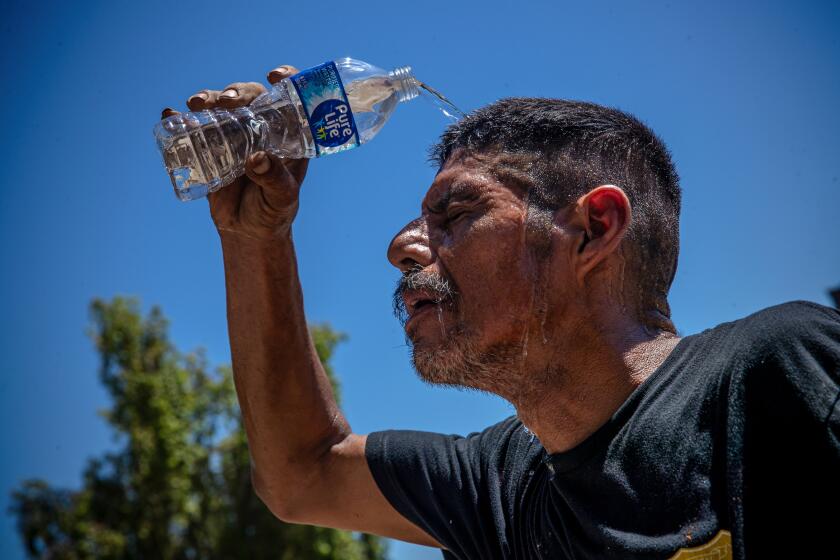These California counties endured the nation’s longest streaks of excessive heat

- Share via
As a second July heat wave is expected to broil the state, officials warn that the dangerous and dire consequences of extreme heat events are expected to only worsen — in length and severity — in a warming climate.
That grim outlook comes on top of new data showing just how bad the heat has been in California’s interior.
According to data released this week by the U.S. Census Bureau, locations along the California-Arizona border had the country’s longest streak of days that hit 90 degrees in 2022.
Residents in some areas of eastern Riverside, eastern San Bernardino and Imperial counties saw streaks of 156 days, or more than 22 weeks, at or above 90 degrees in 2022, according to the new data. A few communities in nearby Yuma and La Paz counties in Arizona also hit that many days in a row at or over 90 degrees.
The federal government defines extreme heat for most of the nation as two or three days above 90 degrees. California, however, takes a more nuanced measure, basing extreme heat thresholds on a location’s average historical high. In some cases, the state has classified extremely hot days as over 100 degrees.
Other areas in southeastern California — specifically, in Imperial, Inyo and eastern Riverside and eastern San Bernardino counties — hit more than 100 consecutive days with temperatures at or above 90 degrees in 2022, according to the new data.
Communities in Kern, Kings, Fresno and Tulare counties recorded the next longest stretches, hitting 91 or 92 days at or over 90 degrees.
The Census released this data as part of its Community Resilience Estimates for Heat, an effort to better understand vulnerabilities to extreme heat — a phenomenon that has become the nation’s most deadly weather-related event.
Here is a list of temperature records broken during this long-duration, extreme heat wave broiling California and the West.
“We do know we need to be more prepared for this,” said Patricia Solís, the executive director of Arizona State University’s Knowledge Exchange for Resilience, which helped develop the heat-focused data set. “It is hot and getting hotter. ... We need to scale our preparedness and response and resilience to the scale of the problem.”
At some point in 2022, more than three-quarters of California’s census tracts had a “heat event,” defined by the Census Bureau as either two or more consecutive days that hit 90 degrees or a day with a “wet bulb temperature” at 80 degrees or higher. The wet bulb measure is the temperature reading from a thermometer covered in a water-soaked cloth, which slowly evaporates, mimicking the heat stress on the body as people sweat. Research has found that a wet bulb temperatures over 85 degrees can begin to cause significant effects on daily life and human health.
More than 40% of the communities that experienced a heat event had a high rate of households that are considered significantly socially vulnerable, having at least three risk factors that can compound the effect of extreme heat or other disasters, according to federal officials.
Extreme heat is the nation’s deadliest climate hazard. State leaders need to move much faster to protect residents and workers from the growing threat.
The U.S. Census Bureau considered 11 social vulnerabilities, including households that potentially lack air conditioning, have financial hardships or disabilities, lack health insurance or internet access, or have residents older than 65.
Solís said she hopes that the data can help governments, community organizers, nonprofits and academics “target the people who need it the most,” when it comes resources that help people become more resilient to extreme heat.
“This helps us give some visibility to that and help us refine where we target interventions,” she said.
More to Read
Sign up for Essential California
The most important California stories and recommendations in your inbox every morning.
You may occasionally receive promotional content from the Los Angeles Times.














